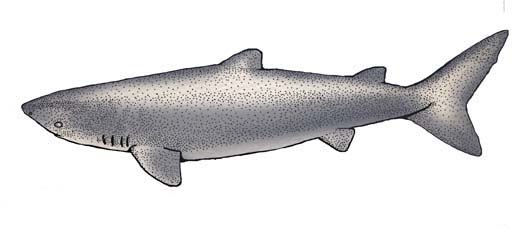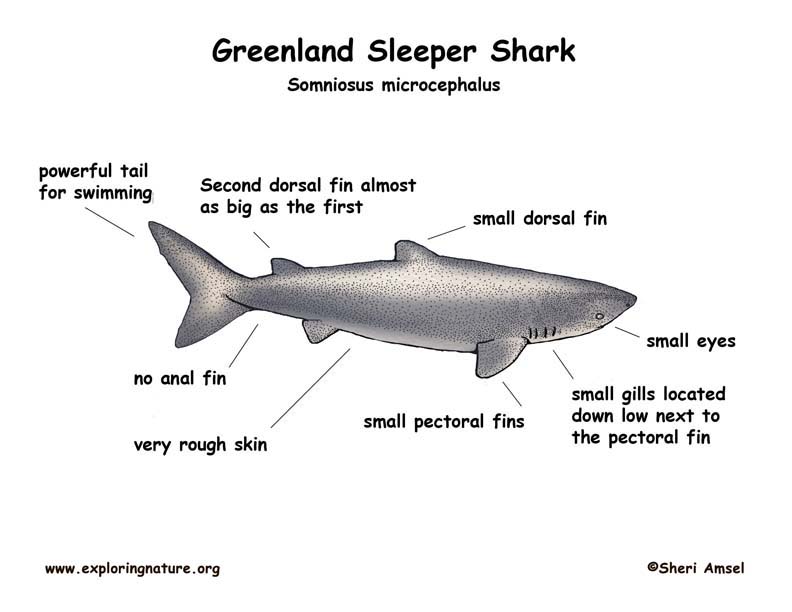

They are found in the Northern Atlantic and Arctic. Their range stretches from Maine to the North Sea.
They live in polar waters year round.
They are one of the largest sharks in the world, reaching up to 20 feet long. (They are the largest shark in Arctic waters.) They have small fins for a shark. The main dorsal fin, which is usually large and distinct in sharks, is small in this species. They have a second dorsal fin that is almost as large as the first. They are missing the small back (anal) fin underneath, which helps identify them from other sharks. Their gills are small and low down by their pectoral fins. They have small eyes. Their skin is very rough.
They are not aggressive sharks, but move slowly, often swimming in deep water, away from the coast in summer. They may approach land in colder weather. They are such a slow moving species that there are some documented cases of fisherman being able to haul them up out of the water by hand.
They eat seals, fish and anything dead in the water (carrion). They are not picky eaters and will take a bite out of anything that looks like food. They are attracted by the smell of rotting flesh in the water and will gather in groups where whales or seals are being killed. They gather and feed hungrily on the waste dumped off fishing and whaling boats.
Females carry a large number of eggs. Unlike some sharks they are not in capsules, but rather are soft eggs. They are ovoviviparous, like many sharks, which means they carry their eggs inside until they hatch and then have 5-10 live young.
Kingdom: Animalia
Phylum: Chordata
Subphylum: Vertebrata
Class: Chondrichthyes
Order: Squaliformes
Family: Dalatiidae
Subfamily: Somniosinae
Genus: Somniosus
Species: S. microcephalus
When you research information you must cite the reference. Citing for websites is different from citing from books, magazines and periodicals. The style of citing shown here is from the MLA Style Citations (Modern Language Association).
When citing a WEBSITE the general format is as follows.
Author Last Name, First Name(s). "Title: Subtitle of Part of Web Page, if appropriate." Title: Subtitle: Section of Page if appropriate. Sponsoring/Publishing Agency, If Given. Additional significant descriptive information. Date of Electronic Publication or other Date, such as Last Updated. Day Month Year of access < URL >.
Amsel, Sheri. "Shark (Greenland) " Exploring Nature Educational Resource ©2005-2024. December 14, 2024
< http://exploringnature.org/db/view/605 >

